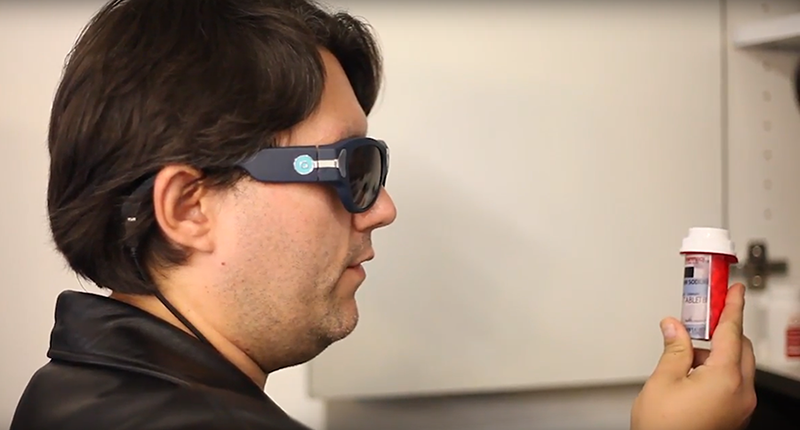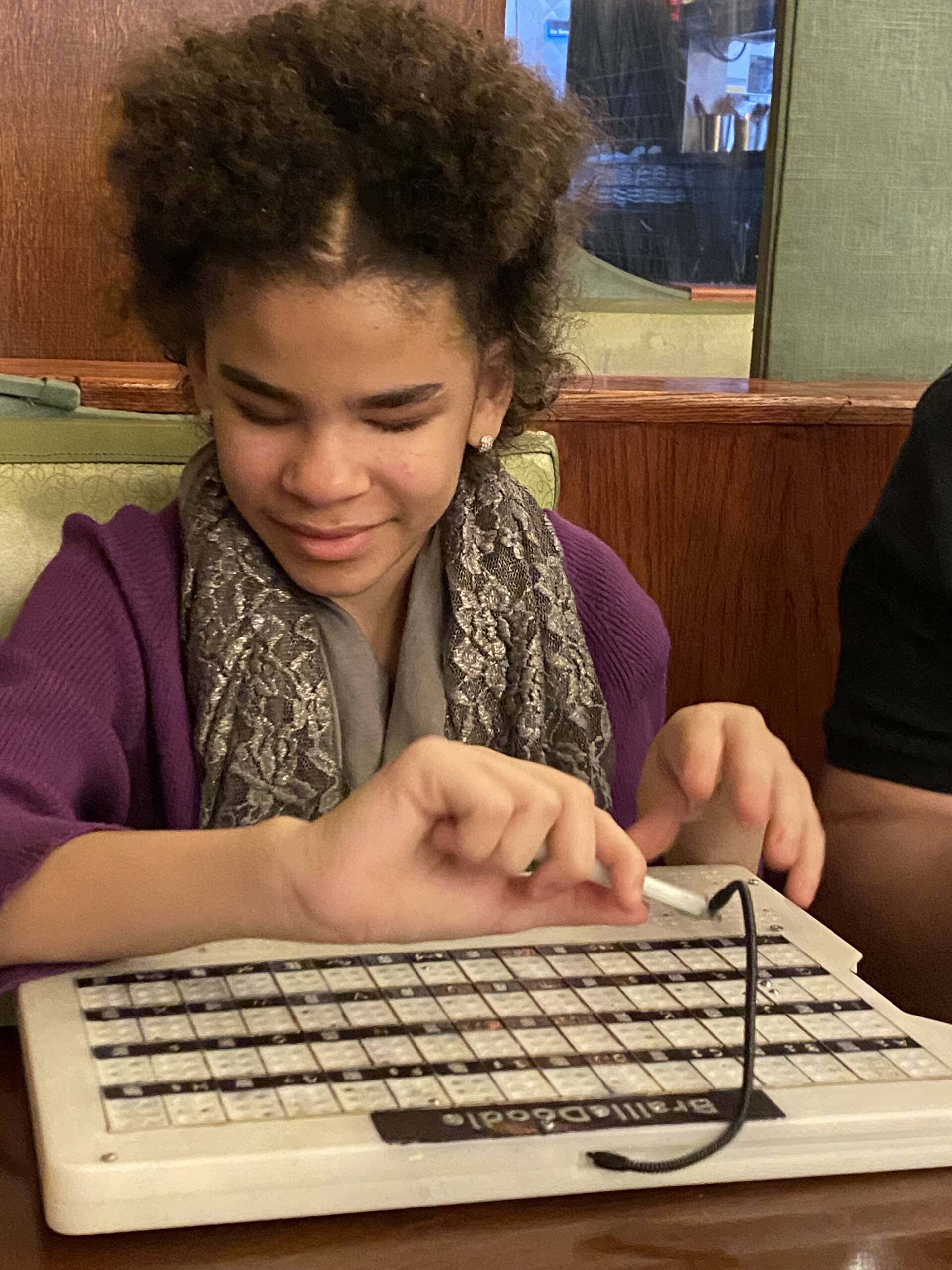Speech-to-Text Devices for Low Vision: Enhancing Ease of Use
Empowering Self-reliance With Assistive Innovation for the Blind
The combination of assistive modern technology into the lives of individuals with aesthetic impairments represents a considerable development in advertising independence and self-sufficiency. From innovative display viewers to sophisticated smart walking canes, these tools not just enhance day-to-day navigating and communication yet additionally empower individuals to involve meaningfully in numerous elements of life. As we check out the myriad benefits and real-world applications of these technologies, it comes to be important to examine the hidden factors that add to their effectiveness and the capacity for future advancements in this vital area.
Summary of Assistive Technology

The development of assistive technology is based in principles of inclusivity and empowerment. Innovations in software, equipment, and sensory improvements offer users with options customized to their specific demands. From display readers that convert message to speech, to responsive tools that convey information via touch, these tools change the method people engage with their surroundings.
Along with useful applications, assistive innovation promotes greater social inclusion and engagement in various fields, including education and work (AI-powered visual aids). As research study and growth continue to develop, the potential for assistive modern technology to additionally boost the lives of visually damaged individuals stays encouraging, leading the way for a more fair society where every person can thrive
Kinds Of Assistive Devices
A range of assistive tools have emerged to support individuals with aesthetic disabilities, each developed to fulfill specific needs and boost daily performance. These tools range from low-tech solutions to modern innovations, providing diverse alternatives for individuals.
Low-tech gadgets consist of magnifiers and large-print products that help in analysis and writing. Braille devices, such as Braille stylus pens and slates, allow tactile analysis and communication. Orientation and wheelchair aids, like white walking sticks, help customers navigate their environment securely.
On the greater end of the range, digital magnifying systems and display viewers offer significant assistance. Electronic magnifiers enable individuals to enlarge message and images on screens, while display visitors convert digital material right into synthesized speech, assisting in accessibility to details on computer systems and smart devices.
Smart device applications also play an important function, supplying functions like message recognition and navigation help. Wearable technology, such as wise glasses equipped with enhanced reality, is becoming a promising device to improve situational awareness.
Advantages of Assistive Technology
The assimilation of assistive technology substantially enhances the lifestyle for people with aesthetic problems. These innovations encourage individuals by advertising freedom, enabling them to browse their settings better and carry out day-to-day tasks with greater ease. For example, display viewers and magnification software enable people to access digital details, promoting professional and instructional opportunities that might have formerly been out of reach.
Furthermore, assistive devices such as clever canes and GPS applications offer real-time navigating assistance, improving wheelchair and safety. This increased freedom not just boosts self-esteem however likewise motivates social engagement, permitting users to take part more fully in their neighborhoods.
Assistive technology also helps with communication, assisting customers get in touch with others via voice acknowledgment and text-to-speech applications. This capability is important for preserving relationships and accessing essential details.
Furthermore, the modification alternatives offered with numerous assistive innovations make sure that customers can tailor devices to their certain demands, additionally enhancing usability and effectiveness. In general, the advantages of assistive innovation for individuals with visual problems are profound, promoting a more inclusive society where everybody can pursue their goals and objectives.
Case Researches and Success Stories
Highlighting the transformative influence of assistive technology, many case research studies highlight exactly how individuals with aesthetic problems have efficiently incorporated these tools right into their every day lives. One compelling example involves a college pupil that utilized screen reading software program eye exam appointment to browse academic materials and online sources efficiently. This innovation not only promoted her education and learning yet additionally enhanced her confidence in getting involved in discussions and team jobs.
Another study features a professional who employs a smartphone application made for navigating and item acknowledgment. By using this application, he has reclaimed freedom in both his personal and workplace, permitting him to commute independently and involve with associates much more effectively.
Furthermore, a retired person shared her experience with braille e-readers, which allowed her to access a huge range of literature and remain gotten in touch with her area through book clubs.
These success stories highlight the vital duty of assistive technology in promoting self-reliance, improving quality of life, and advertising social integration for people with aesthetic impairments (Smart glasses for the visually impaired). By accepting these ingenious devices, customers can get rid of difficulties and confiscate possibilities like this that contribute to their professional and personal gratification

Future Fads in Assistive Innovation
Advancement in assistive innovation is positioned to redefine the landscape of assistance for people with aesthetic problems. Emerging patterns highlight the combination of expert system (AI) and machine understanding, which enhance the capability of gadgets that assist with navigating and info accessibility. AI-driven applications are now qualified of translating visual data in real-time, making it possible for customers to engage with their atmosphere more independently.
Additionally, the advancement of wearable modern technology is advancing quickly. Smart glasses furnished with increased fact (AR) can eye checkup near me offer audio descriptions of surroundings, changing exactly how customers interact with public rooms. These devices not only advertise freedom but likewise foster social addition.
In Addition, the Net of Points (IoT) is making homes smarter, allowing for smooth connectivity in between assistive tools and everyday home appliances. This connectivity empowers users by allowing automatic feedbacks and voice-activated controls tailored to individual requirements.
Final Thought
To conclude, assistive innovation plays an essential function in encouraging people with aesthetic problems by improving their self-reliance and involvement with their environments. The diverse series of tools and applications available not only facilitates navigating and communication but likewise advertises social combination and opportunities for specialist and personal development. As innovations continue in this field, the capacity for enhancing the top quality of life for those with aesthetic disabilities will certainly increase, promoting greater autonomy and empowerment.
